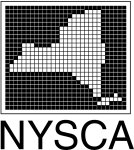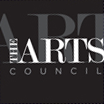HPSCHD, John Cage’s legendary Gesamtkunstwerk is a mass media orgy, considered by many as the wildest, largest, and loudest musical composition of the 20th century. Its very nature is inextricable from the tumult of the year it premiered, 1969. ISSUE Project Room presents this spectacle on May 3rd and 4th in collaboration with Electronic Music Foundation and Eyebeam Art and Technology Center, as part of the 2013 Darmstadt Essential Repertoire series. This new production features composer Joel Chadabe, who has directed performances of HPSCHD throughout the world, as artistic advisor. Keyboardist Neely Bruce, who performed at the 1969 premiere, plays in the harpsichord ensemble. Artist Bradley Eros curates an extensive body of film and video artists to interpret the immersive visual score.
Performances take place at Eyebeam Art and Technology Center on Friday, May 3 from 5pm to 10pm and on Saturday, May 4 from 1pm until 6pm. The audience is invited to arrive and leave at any time during the performance and refreshments are available courtesy of Cloud Coffee. Kayrock will be screenprinting Tshirts live based on the original HPSCHD design by Gary Viskupic (1969).
About HPSCHD
A collaboration between Cage and the electronic composer Lejaren Hiller, HPSCHD is known for being Cage’s first and most significant foray into utilizing the computer to execute the chance operations of the I-Ching. The inspiration for the piece came from a commission for harpsichord, an instrument disliked by Cage. Starting with material from Mozart’s Dice Game, Cage and Hiller plucked from virtuosic repertory by Beethoven, Gottschalk, and Busoni (among others). Hiller’s programs in the FORTRAN computer language, named ICHING, DICEGAME, and HPSCHD reshaped this material for the scores. Hiller also produced multiple tapes of microtonal electronic sounds to be played simultaneously with the harpsichords. The event premiered in May of 1969 at the University of Illinois’s Assembly Hall, within a visual environment of hundreds of projected images and films, many supplied by NASA. Thousands came to experience the event. In retrospect, HPSCHD can be described as Cage’s prescient response to Marshall McCluhan, Happenings, the moon landing, the history of Western Classical music, hippy utopianism, Buckminster Fuller, and perhaps even a prediction of the computer age and its effects on human consciousness. Presented on the heels of the Cage centenary, Darmstadt’s presentation of HPSCHD offers a 21st century audience the opportunity to reflect on how this totality of ideas has transformed in the 44 years since its inception.
Harpsichordists: Neely Bruce, Joseph Kubera, Karl Larson, Emily Manzo
Electronics: Greg Davis, Ben Vida
Artists contributing visuals to the Lightcircus include: Lea Bertucci, Elle Burchill & Andrea Monti, Maria Chavez, Chika, Lili Chin, Peter Cramer & Jack Waters, Kenny Curwood, Zac Dempster & Wendell Seitz, Thomas Dexter & Heather Dewey-Hagborg, Luke Dubois, Bradley Eros, Lorenzo Gattorna, Tim Geraghty, Stephanie Gray, Rachael Guma, Sarah Halpern, Genevieve Havemeyer-King, Jay Hudson, Victoria Keddie & Scott Kiernan, Andrew Lampert, Zach Layton, Josh Lewis, Katherine Liberovskaya, Shona Masarin, Brock Monroe, Mike Olshan, Rachelle Rahme, Ursula Scherrer, Joel Schlemowitz, Lary Seven, Jessie Stead, Richard Sylvarnes, Keiko Uenishi, Matt Wellins, Joshua White & Briged Smith, Tim White, Dan Winckler, Stephanie Wuertz, Erik Z (Lineup subject to change).
Sound Design: Daniel Neumann
Installation Design: Brock Monroe and Joshua White (Joshua Light Show)
Joel Chadabe is an internationally recognized pioneer in the development of interactive music systems. He has concertized worldwide since 1969. His book 'Electric Sound' is the first comprehensive overview of the history of electronic music. His articles have appeared in Leonardo, Computer Music Journal, Contemporary Music Review, Perspectives of New Music, Melos, Musique en Jeu, and other journals, and anthologized in books by MIT Press, Routledge, and other publishers. His music is recorded on EMF Media, Deep Listening, CDCM, Lovely Music, and other labels. He has received awards from NEA, NYSCA, Ford Foundation, Rockefeller Foundation, Fulbright Commission, and other organizations. He is founder of Intelligent Arts, an electronic publishing company, adjunct faculty at NYU, and president of Electronic Music Foundation.
Bradley Eros works in myriad media: experimental film, video, collage, photography, performance, sound, text, contracted and expanded cinema & installation. His work has been exhibited at Whitney Biennial & The American Century, MoMA, Performa09, The New York, London & Rotterdam Film Festivals, The Kitchen, and Microscope Gallery. He has worked for many years with the New York Filmmakers’ Cooperative, Anthology Film Archives & co-directed the Roberta Beck Mercurial Cinema. Also a maverick curator, composer, designer & investigator, Eros’s practice encompasses ephemeral cinema, mediamystics, subterranean science, erotic psyche, cinema povera, poetic accidents and musique plastique.
Darmstadt “Classics of the Avant Garde” is the music series led by composers Nick Hallett and Zach Layton since 2004, a program of ISSUE Project Room. Essential Repertoire serves to present dynamic interpretations of rarely performed masterpieces from the canon of experimental music.
Eyebeam supports and promotes dynamic and risk-taking work at the intersection of art and technology. Eyebeam provides residencies and fellowships for interdisciplinary artists, hackers, curators, and technologists who are addressing the issues and concerns of our time. As host to a diverse weekly output of exhibitions, panels, workshops, performances, and events, Eyebeam seeks to provide an environment for dialogue and collaboration, as well as a fertile context for discovery among its artists and the general public.



